Introduction
When considering the refinancing of your business debt, it's crucial to start with a comprehensive evaluation of your current liabilities. This involves gathering all relevant data about your existing debts, such as the balance due, interest rates, and repayment terms. By doing so, you gain a clear understanding of your financial commitments, enabling you to identify the most advantageous refinancing strategy.
Understanding the present credit landscape is also vital, as non-bank financial institutions now offer competitive rates that can potentially improve your financial position. With the significant presence of debt in the market, reassessing and potentially restructuring your debt becomes even more critical for sustainability and growth. In-depth assessment is the cornerstone of a refinancing strategy that can lead to improved financial health and long-term success for your business.
Step 1: Assess Your Current Debt Situation
When contemplating the refinancing of your business debt, it's imperative to begin with a comprehensive evaluation of your current liabilities. This entails compiling all pertinent data about your existing debts, such as the cumulative balance due, the applicable interest rates, and the established terms of repayment. By doing so, you equip yourself with a lucid understanding of your fiscal commitments, thereby enabling you to pinpoint the most advantageous refinancing strategy.
For instance, consider the scenario of SoFi, a digital financial services innovator offering a broad spectrum of financial products. They cater to over 6.9 million members, providing tools for borrowing, saving, spending, and investing. Their vertically integrated financial technology platform showcases how a detailed understanding of one's financial state can facilitate better money management.
Similarly, understanding your business's debt profile is the first step toward effective refinancing.
Moreover, it's crucial to be aware of the present credit landscape. In recent times, non-bank financial institutions have been competing closely with traditional banks, offering more attractive interest rates. This trend has been observed in various financial services sectors, from personal loans to mortgages and now, potentially, to business debt refinancing.
Leveraging such competitive rates could be the key to securing a better financial position for your business.
In light of the surge in bonds backed by subprime auto loans, as evidenced by the increased issuance following the pandemic, it's evident that borrowers must be acutely aware of the terms they agree to. High-interest rates, such as the 22.05% charged by Santander Consumer USA to a subprime borrower, can greatly impact the ability to manage cash flow and service debt. This underscores the importance of meticulously analyzing your debt obligations and refinancing options.
Furthermore, UBS's estimation of the value of outstanding American leveraged loans at approximately $1.4 trillion, along with over $1.5 trillion managed by private credit lenders, signals a significant presence of debt in the market. With such substantial amounts involved, it becomes even more critical for businesses to reassess and potentially restructure their debt to ensure sustainability and growth.
To conclude, an in-depth assessment of your business's debt situation is a prerequisite for effective refinancing. It is the cornerstone of a strategy that could lead to improved financial health and long-term success for your business.
Step 2: Set Clear Refinancing Goals
When embarking on the refinancing of business debt, precision in goal-setting is paramount. It's not solely about lowering monthly outlays or acquiring a more favorable interest rate. It's about a comprehensive approach that might include consolidating several obligations into one manageable loan.
This strategic focus allows for a customized solution that resonates with the specific requirements of your business.
The financial landscape is ever-evolving, as seen in the case of Cemex, where the success of refinancing efforts is not guaranteed and is influenced by a myriad of uncertainties and the implementation pace of new technologies. A poignant reminder of this comes from leading economist Mohamed El-Erian, who highlighted the 'massive' refinancing needs against a backdrop of soaring interest rates, particularly within the commercial real estate sector. This underscores the importance of a well-thought-out refinancing strategy that takes into account market fluctuations and future projections.
In the context of a shaky market, it's essential to remember that while non-bank lenders are gaining traction with competitive rates, traditional banking institutions remain a solid option for their lower rates and favorable terms. The key is to analyze your business's financial health thoroughly, examining financial statements and considering revenue growth, profit margins, cost management, and investment returns. Such introspection aids in making astute financial decisions that align with your refinancing objectives.
Furthermore, understanding the broader economic climate is crucial. With the Federal Reserve's interest rate hikes aimed at cooling the economy, it's interesting to note that companies with long-term fixed-rate bonds have turned this into an advantage by earning more on their cash reserves. As we look to the future, with potential rate stability and a decrease anticipated in the coming years, it's important to consider the timing of refinancing in relation to market conditions and its impact on the value and terms of any financial deal.
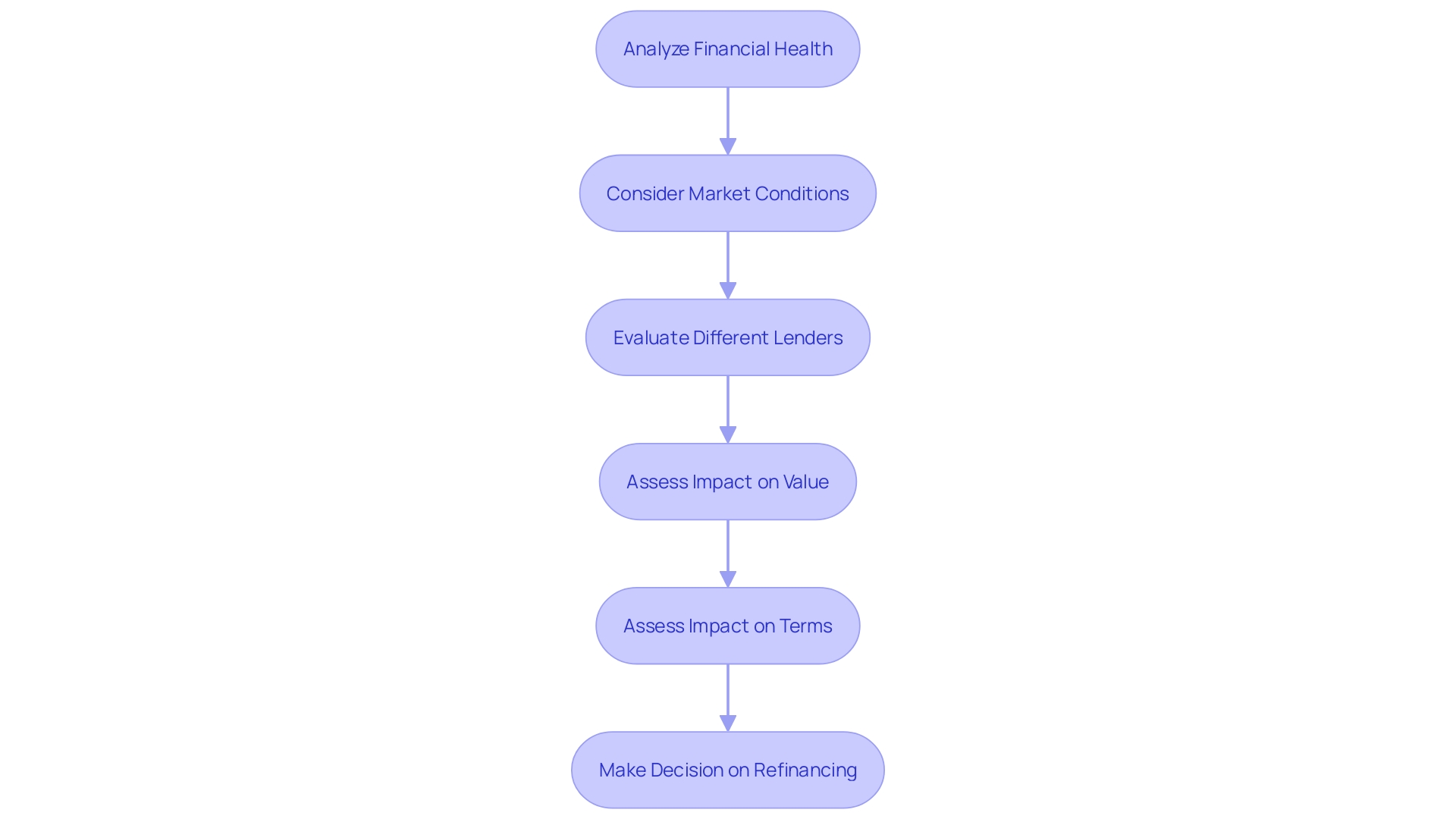
Step 3: Research and Compare Lenders
Refinancing business debt involves not just scouting for new lenders but also a comprehensive evaluation of the terms they offer. When considering debt refinancing options, small business owners should prioritize lenders with a proven track record of assisting similar enterprises. Scrutinizing various elements like interest rates, repayment conditions, and potential fees is essential to identify a refinancing deal that aligns with your company's financial strategy.
It's important to understand that the benefits of refinancing can be influenced by a range of factors, including the implementation of new technologies and market conditions, which are not always predictable. Hence, making an informed decision requires looking beyond just the numbers and considering how the refinancing will fit into the broader scope of the business's financial journey, especially in a fluctuating economic environment.
Step 4: Prepare Your Financial Documentation
When pursuing the refinancing of business debt, meticulous preparation of your financial documents is a cornerstone of success. This includes, but is not limited to, comprehensive financial statements, up-to-date tax returns, and pertinent bank statements. A well-documented financial history not only accelerates the application process but also bolsters your credibility, enhancing the likelihood of securing approval for refinancing.
Lenders often conduct a rigorous appraisal to ascertain the market value of assets, ensuring the loan amount does not exceed the collateral's worth—an exercise reflecting prudent risk management. As emphasized by financial experts, a seasoned loan complemented by a history of punctual payments significantly improves eligibility for refinancing. Furthermore, the potential benefits, such as lower interest rates and expedited debt repayment, must be weighed against the associated costs, including closing fees.
With financial markets in flux, the prospect of refinancing in 2024 becomes particularly compelling if it promises a reduction in mortgage rates, as speculated by industry authorities in light of potential Federal Reserve rate cuts. A strategic approach to refinancing, supported by a solid financial foundation and a keen understanding of market dynamics, can yield considerable fiscal advantages for your business.
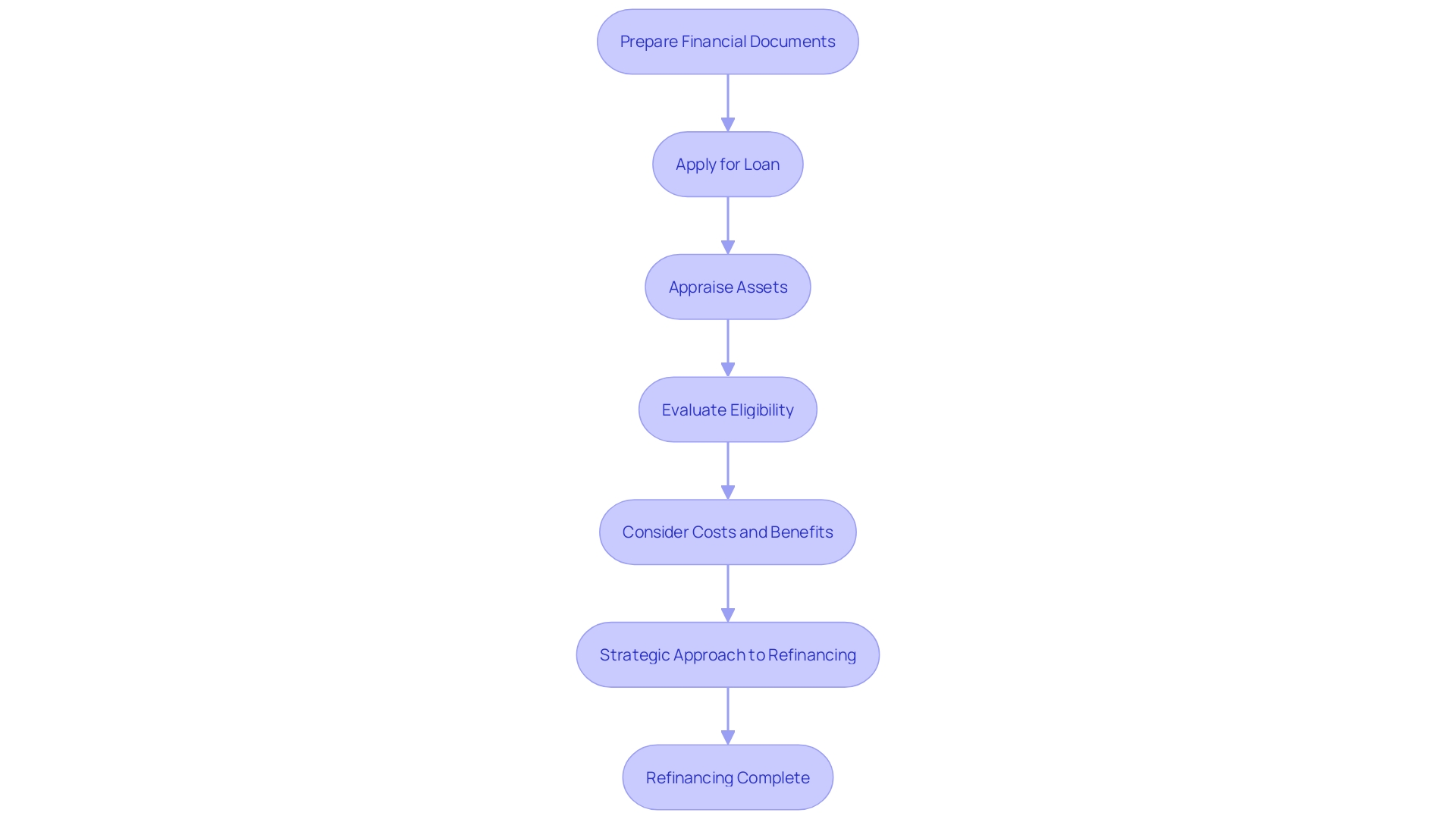
Step 5: Submit Your Refinancing Application
Embarking on the refinancing journey requires meticulous preparation and an eye for detail. Commence by conducting a thorough evaluation of potential lenders, comparing their terms and rates to ensure they align with your financial objectives. Once you've pinpointed the ideal lender, it's crucial to amass all pertinent documentation that supports your business's financial health and growth potential.
This documentation may span from detailed business plans, which outline your company's mission, target customers, product offerings, and financial forecasts, to essential legal documents.
Ensure that your financials are in impeccable order, as your credit score and history play pivotal roles in securing favorable rates. Keep in mind that the rates advertised may come with specific eligibility conditions, and the actual rates you qualify for can be influenced by an array of factors including market conditions and your own financial profile. Engage with a mortgage professional to discern the specific rates applicable to your situation.
When preparing your application, clarity and precision are your allies. The process might include an appraisal to ascertain your property's market value, a critical step for the lender to gauge the value against the loan amount. An appraisal imparts insights into neighborhood property values and how well you've maintained your own premises.
Lenders typically require this step to ensure the loan does not exceed the worth of the collateral—your property.
As you compile your application, draw on all financial data at your disposal, including income, assets, employment history, and credit information. A well-documented and comprehensive application, bolstered by regular monitoring of your credit and responsible credit use, can significantly amplify your prospects of approval.
The shifting landscape of interest rates—as evidenced by the 2023 trend where non-bank lenders are increasingly competing with traditional banks—suggests that now more than ever, business owners must exercise due diligence in their refinancing endeavors. A careful examination of the market and deep understanding of your financial trajectory are imperative to navigate this dynamic environment successfully. Whether it's a 30-year fixed-rate refinance to ease monthly payment pressures or a strategic debt consolidation, the key lies in analyzing how the refinancing will align with your current finances and long-term business goals.

Step 6: Evaluate and Compare Refinancing Offers
When you embark on the path of business debt refinancing, you're likely to encounter a variety of offers from interested lenders. It's a critical moment that demands your close attention. Evaluate these proposals with a discerning eye, weighing factors such as the interest rates, which can be a game-changer in the long run.
Remember, lower rates can significantly reduce your overall financial burden. Delve into the details of the repayment terms; a longer tenure might ease your immediate cash flow, but could lead to higher total interest outlay. Scrutinize any fees associated with the refinancing deal, as they can add up and affect the cost-effectiveness of your new loan arrangement.
Additionally, don't overlook the additional perks lenders might throw in to sweeten the deal. These could come in the form of cashback incentives, flexible repayment options, or other financial benefits that align with your strategic objectives. It's not just about picking a refinancing option; it's about choosing the one that propels you towards your financial goals and fits snugly with your company's fiscal outlook.
As you consider these multifaceted aspects, it's also wise to get prequalified, which can provide you with a clearer picture of what to expect and prepare you for the financial transition ahead. With careful consideration and a strategic approach, you'll be well on your way to securing a refinancing deal that not only meets your immediate needs but also sets you on a path toward sustained financial health and growth for your small business.
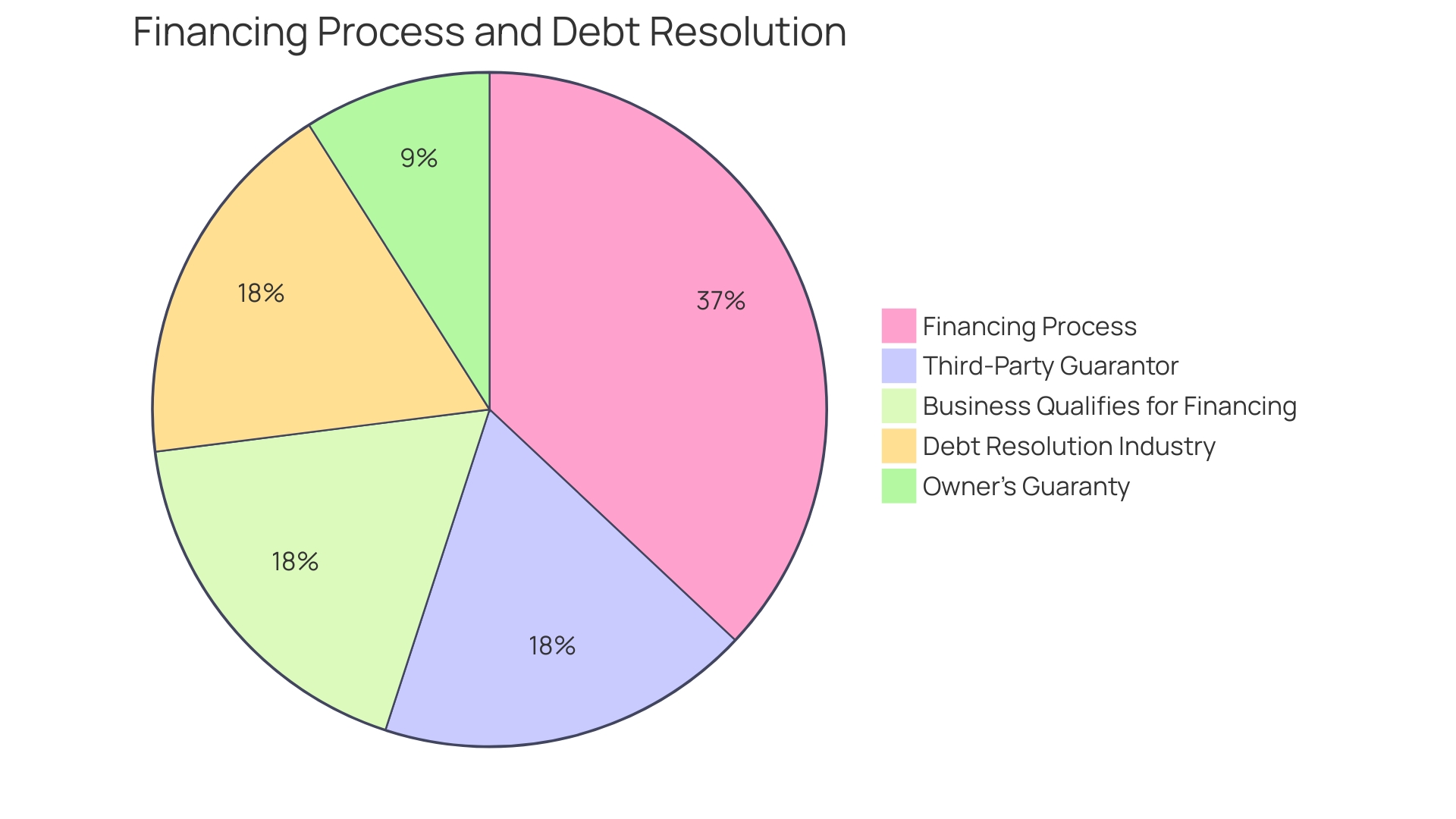
Step 7: Review the Terms and Conditions
Diligent scrutiny of the refinancing loan's terms is essential before you commit. Key elements to examine include the interest rate and repayment terms, as well as any fees or penalties that may apply. It's vital to have a comprehensive understanding of the financial implications of the new loan.
Consider the advice of experts, such as Melissa Cohn, who suggests that refinancing is prudent only if the new interest rate is at least 0.75% lower than your current rate. Additionally, be aware of the costs involved; Freddie Mac reports that average closing costs are around $5,000, though this can vary significantly. Understand that refinancing replaces your existing mortgage with a new loan, potentially with different terms and rates, and in the case of a cash-out refinance, a larger loan balance.
This could affect your monthly payments and overall financial strategy. Therefore, approach refinancing with a clear financial plan and consider speaking with multiple lenders to ensure you receive the most favorable terms available.
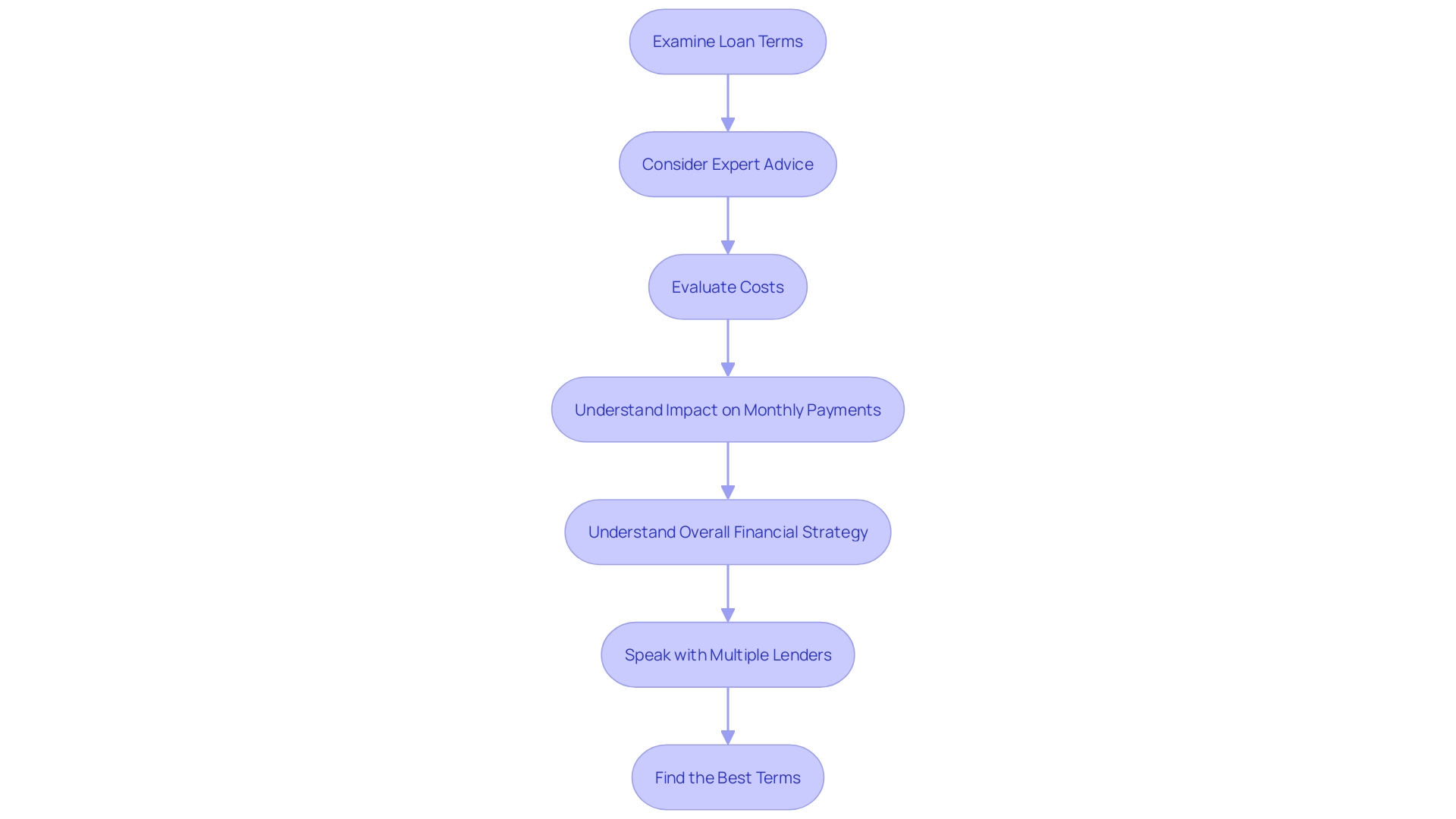
Step 8: Proceed with the Refinancing Process
Securing a favorable refinancing deal requires diligence and attention to detail. Once you've vetted the offers and are ready to move forward, it's crucial to collaborate closely with your lender. This partnership involves fulfilling any outstanding prerequisites, such as providing additional collateral or affixing your signature to loan agreements.
Prompt and proactive engagement is key to ensuring that the refinancing progresses smoothly and is completed without unnecessary delays.
Understanding the refinancing landscape is essential. For instance, refinancing an underwater mortgage can be complex, yet there are avenues open for those who qualify, particularly with government-backed loans. Qualification hinges on a reliable history of timely mortgage payments and holding a seasoned loan.
Refinancing offers benefits like potentially lower interest rates and accelerated loan payoff timelines. However, there are also cons to weigh, including closing costs and the potential financial impact if the home is sold soon after refinancing.
Monitoring the ebbs and flows of interest rates is fundamental, as they can swing unpredictably, influenced by numerous factors. It’s advisable to watch how rates change from day to day and be prepared to act when there’s a significant drop. When refinancing, you're essentially replacing your existing mortgage with a new one, possibly with different terms and rates or even tapping into your home's equity for additional funds.
Considering the implications of a cash-out refinance is also vital, especially when it's for home improvements. A new loan means new closing costs, which can be substantial, and a new rate, which requires careful financial calculations. It's imperative to ensure the refinancing benefits outshine the costs, as you will likely incur closing costs and possibly lender fees.
Remember, the refinancing process is not just about securing a lower monthly payment; it's about making a strategic financial decision that aligns with your business goals. Whether you're aiming to use equity for a significant expense or seeking to modify the terms of your mortgage for reduced monthly payments, it's important to choose the type of refinancing that suits your situation. With an expert approach, the right refinancing strategy can provide a path to financial growth and stability for your small business.
Step 9: Monitor Your New Loan
Effective management of your refinanced business debt is a crucial step towards financial stability. It's not just about keeping an eye on the repayment schedule, but also understanding the intricacies of your new loan terms. Just as Pacific Steel & Recycling took a data-driven approach to cut healthcare costs by adopting reference-based pricing, a similar level of scrutiny and proactive management can help in managing your loan efficiently.
They achieved substantial savings by abandoning traditional models in favor of a system that offered more transparency and aligned with their financial realities. Likewise, you should explore opportunities to accelerate your debt repayment when possible, potentially saving on interest expenses in the long run. It's the diligent monitoring and a willingness to adopt innovative strategies that can significantly improve your company's financial health.
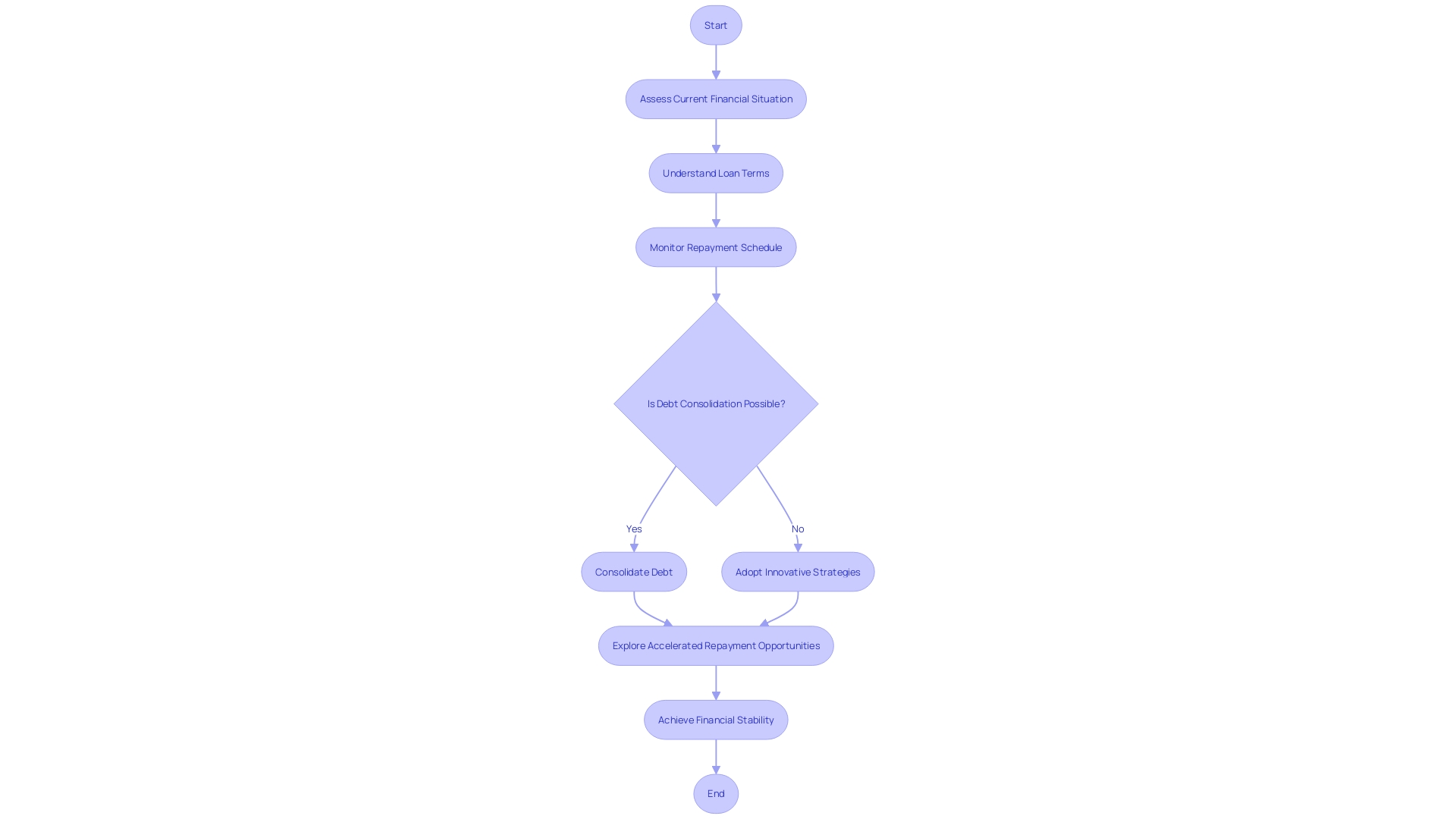
Step 10: Evaluate the Impact of Refinancing
Post-refinancing, it's crucial for businesses to scrutinize the repercussions of their decisions on their operations. For example, a major hotel with a thriving restaurant leveraged its prime city center location to bolster food and beverage sales, underscoring the importance of strategic positioning in achieving business objectives. Similarly, evaluating the success of a refinancing deal involves analyzing whether the reduced costs or improved terms have tangibly bolstered the company's financial health.
It's essential to consider the broader economic landscape, like the potential for 'pain points' in commercial real estate due to high-interest rates, as pointed out by top economist Mohamed El-Erian. This context allows business owners to gauge the timing and impact of their refinancing strategy, ensuring it aligns with market conditions and their company's long-term financial trajectory.
Conclusion
In conclusion, when refinancing your business debt, it's crucial to assess your current liabilities, understand the credit landscape, and set clear refinancing goals. Research and compare lenders, prepare your financial documentation meticulously, and evaluate refinancing offers with attention to detail. Monitor your new loan and evaluate its impact on your business operations.
By following these steps, you can improve your financial health and achieve long-term success for your business.




